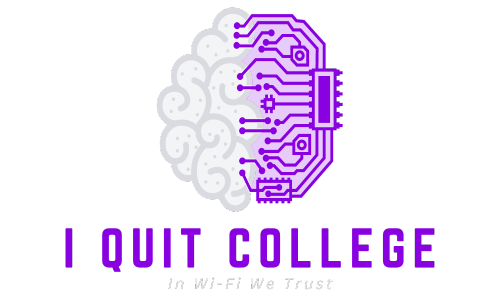Storytelling has always been a fundamental part of human culture, allowing us to share experiences, wisdom, and emotions. In the world of branding, storytelling has emerged as a powerful tool to captivate audiences, establish lasting connections, and shape brand identity. Through well-crafted narratives, brands can engage their customers on a deeper level and leave a lasting impression.
Effective storytelling involves more than simply relaying information; it requires the art of crafting a compelling narrative. By utilizing storytelling techniques, brands can create immersive experiences that resonate with their target market. Through the power of narrative, brands can evoke emotions, inspire action, and reinforce their messaging.
Key Takeaways:
- Storytelling is a powerful tool in branding that creates emotional connections and establishes brand identity.
- Well-defined characters, conflict and resolution, and authentic narratives are essential elements of compelling brand storytelling.
- Utilizing storytelling techniques allows brands to engage their audience on a deeper level and leave a lasting impression.
- Storytelling evokes emotions, inspires action, and reinforces brand messaging.
- Crafting a compelling narrative is an art form that enables brands to captivate their target market and stand out from the competition.
The Role of Brand Archetypes
Brand archetypes, inspired by Carl Jung’s work, play a crucial role in shaping brand narratives. Archetypes represent universal symbols and themes that evoke specific emotions and associations. Brands can align themselves with dominant archetypes such as the Hero, the Innocent, or the Rebel to create cohesive stories that resonate with their target market.
By embodying a particular archetype, brands tap into a collective unconsciousness that connects with the deepest desires and aspirations of their audience. These archetypes serve as a blueprint for storytelling, allowing brands to create narratives that are relatable, memorable, and impactful.
Examples of Brand Archetypes in Action
Let’s explore some examples of how brands have effectively utilized archetypes to craft compelling narratives:
- The Hero: Nike aligns itself with the Hero archetype by empowering individuals to overcome challenges and achieve greatness. Their “Just Do It” campaign inspires people to push beyond their limits and become their own heroes.
- The Innocent: The Coca-Cola Company embodies the Innocent archetype by promoting joy, happiness, and simple pleasures. Their classic holiday campaigns evoke a sense of nostalgia and innocence, capturing the hearts of consumers around the world.
- The Rebel: Apple, known for its innovative and visionary approach, embraces the Rebel archetype. Their “Think Different” campaign challenged the status quo, inspiring individuals to break free from conformity and think outside the box.
These examples illustrate how brand archetypes provide a framework for storytelling that resonates deeply with audiences. By understanding the dominant archetype that aligns with their brand values and positioning, companies can create powerful narratives that captivate and engage their target market.

“Brand archetypes are like the DNA of a story, helping brands create narratives that ignite emotions and forge meaningful connections with their customers.” – Jane Anderson, Brand Strategist
Creating Emotional Brand Experiences
A compelling brand narrative goes beyond words and aims to create an emotional experience for consumers. In the realm of marketing, visual storytelling plays a significant role in evoking emotions and connecting with audiences. Through the use of colors, logos, and imagery, brands can effectively convey their personality and values.
Consistency is key when it comes to visual storytelling in marketing. Aligning packaging, advertising campaigns, and customer interactions with the brand narrative reinforces its impact. This consistency ensures that every touchpoint with the brand delivers a cohesive and memorable experience.
When crafting a brand narrative, the power of visuals cannot be underestimated. They have the ability to capture attention, elicit emotions, and leave a lasting impression on consumers. By incorporating visual storytelling techniques, brands can build a deeper connection with their target audience and differentiate themselves from competitors.
Colors that Speak Volumes
Colors have the power to evoke specific emotions and associations. Brands can strategically choose colors that align with their narrative and reinforce their brand identity. For example, warm tones like red and orange can evoke feelings of excitement and energy, while cool tones like blue and green can create a sense of calm or trust.
Take Coca-Cola, for instance. The brand’s use of vibrant red has become instantly recognizable, representing joy, happiness, and celebration. This visual element, combined with their heartwarming holiday campaigns, has solidified their emotional connection with consumers.
Logos as Symbols
A brand’s logo is more than just a visual identifier—it serves as a symbol that speaks to the company’s values and personality. Logos can convey a sense of trust, innovation, or reliability, helping to reinforce the brand’s narrative.
Consider Apple’s iconic logo—a simple, sleek, bitten apple. This symbol resonates with consumers by portraying simplicity, sophistication, and forward-thinking technology. It aligns with Apple’s narrative of revolutionizing the tech industry and creating user-friendly products.
Imagery that Inspires
The use of imagery in visual storytelling can evoke emotions, inspire action, and create a sense of aspiration. Brands can leverage captivating visuals to draw consumers into their narrative and make it more relatable.
Patagonia, a renowned outdoor clothing brand, is a prime example of using imagery to connect with their audience. Their photography showcases individuals embracing nature, igniting a sense of adventure, and calling to the brand’s core values of sustainability and environmental activism.

Visual storytelling enables brands to create an emotional bond with consumers, making their narrative more memorable and impactful.
The Role of Consumer Engagement
Consumer engagement plays a vital role in bringing the power of storytelling in branding to life. By creating opportunities for customers to actively participate in the storytelling journey, brands can forge deeper connections and foster brand advocacy. Social media and digital platforms offer the perfect stage for brands to engage their audience and invite them to become co-creators of the brand narrative.
One valuable storytelling tip for brands is to encourage user-generated content. By asking customers to share their own stories and experiences related to the brand, a sense of authenticity and community is created. This not only strengthens the brand narrative but also instills a sense of belonging among customers.
Contests and interactive campaigns are another effective way to engage consumers in storytelling. Brands can invite their audience to participate in challenges or contribute ideas, allowing them to actively shape the brand’s narrative. This not only generates excitement but also empowers customers, making them feel valued and heard.
Including storytelling for kids can also be a powerful strategy for consumer engagement. Brands can leverage children’s imaginations and create interactive storytelling experiences that captivate their young audience. By tapping into the innocence and wonder of children, brands can leave a lasting impression and foster brand loyalty from an early age.
The Benefits of Consumer Engagement:
- Deepens emotional connections with customers
- Builds brand loyalty and advocacy
- Fosters a sense of community and belonging
- Empowers customers and values their input
- Cultivates excitement and engagement
Consumer engagement through storytelling not only brings the brand narrative to life but also creates meaningful interactions with the audience. By actively involving customers in the storytelling process, brands can forge deeper connections, inspire loyalty, and create a community of brand advocates.
“When customers become co-creators of the brand narrative, they feel personally invested and become loyal advocates.”
Stay tuned for Section 5, where we explore the process of humanizing brands through impactful stories.
Humanizing Brands through Stories
In today’s digital world, consumers crave authenticity and human connections. They are no longer satisfied with faceless corporations and impersonal transactions. Instead, customers are drawn to brands that can establish a genuine emotional connection by sharing their stories.
When brands share their stories in a genuine manner, including their struggles and triumphs, they humanize themselves. By showcasing their vulnerability and authenticity, brands create an emotional bond with their customers, leading to increased trust and loyalty.
“Consumers want to connect with brands on a deeper level. They want to know what the brand stands for, what its values are, and how it has overcome challenges. Storytelling allows brands to communicate these aspects effectively,” says Sarah Johnson, marketing director at Storyteller Co.
Through storytelling, brands have the opportunity to stand out in a crowded marketplace. By tapping into the power of narrative, they can differentiate themselves from their competitors and create a unique brand identity that resonates with their target audience.
Building Emotional Connections
A powerful brand narrative evokes emotions and connects with customers on a personal level. By sharing stories of real people and relatable experiences, brands can create a sense of empathy and understanding. This emotional connection fosters a loyal customer base and encourages repeat business.
“When customers feel emotionally connected to a brand, they become advocates. They are more likely to share their positive experiences with others, both online and offline,” explains Laura Thompson, founder of Engage Marketing.
Attracting Top Talent
A strong brand narrative not only captures the hearts of customers but also attracts top talent. In today’s competitive job market, employees are seeking more than just a paycheck. They want to work for a company that aligns with their values and offers a meaningful purpose.
By showcasing their brand story, companies can position themselves as employers of choice. Talented individuals are drawn to organizations that have a compelling narrative, as it indicates a strong mission and a company culture that values authenticity and transparency.
Real-Life Example: Patagonia
A prime example of a brand that has successfully humanized itself through storytelling is Patagonia. The outdoor clothing and gear company uses its brand narrative to promote environmental sustainability and social responsibility.
Patagonia’s stories often revolve around their efforts to protect natural landscapes, their commitment to fair labor practices, and their initiatives to reduce the environmental impact of their products. By sharing these stories, Patagonia has built a loyal community of environmentally-conscious customers who align with the brand’s values.
Overall, storytelling plays a pivotal role in humanizing brands. By sharing authentic stories, brands can form emotional connections with customers, differentiate themselves in the market, and attract top talent. It’s no longer enough for brands to rely solely on product features and benefits; today, consumers want to connect with the stories behind the brand.
Conclusion
The power of storytelling in branding cannot be underestimated. It has the ability to create deep and lasting connections between businesses and their audience. By crafting authentic narratives that engage and resonate with consumers, brands can establish a strong emotional bond.
Utilizing archetypes, such as the Hero, the Innocent, or the Rebel, further enhances the storytelling process. These universal symbols and themes evoke specific emotions and associations, making the brand narrative more relatable and memorable.
Creating emotional experiences through visual storytelling is also crucial. Consistency in colors, logos, and imagery helps shape a brand’s personality and reinforces the narrative, making it more impactful.
Engaging consumers is key to bringing the power of storytelling to life. Brands can leverage social media and digital platforms to invite customers to participate in their storytelling journey. User-generated content, interactive campaigns, and contests can transform customers into co-creators, fostering a sense of belonging and turning them into brand advocates.
In today’s digital world, humanizing brands through storytelling is essential. By sharing authentic stories that highlight struggles and triumphs, brands can create a genuine human connection with their audience. This not only attracts customers but also top talent who seek meaningful purposes and missions.
Storytelling is a driving force in building meaningful brands. It amplifies a brand’s reach, fosters loyalty, and establishes a narrative that resonates with consumers. By embracing the power of storytelling, businesses can create a lasting impression in the hearts and minds of their audience.
FAQ
What is storytelling?
How do brands use storytelling?
What are brand archetypes?
How does visual storytelling impact branding?
How can storytelling engage consumers?
Why is humanizing brands important?
Source Links
- https://www.thoughtlab.com/blog/the-power-of-storytelling-in-branding-crafting-compelling/
- https://www.linkedin.com/pulse/power-storytelling-branding-crafting-compelling-brand-banerjee
- https://www.linkedin.com/pulse/power-storytelling-creating-compelling-brand-narrative-kelly-rose-gklre?trk=article-ssr-frontend-pulse_more-articles_related-content-card






